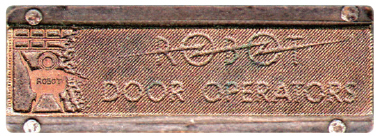
I love finding little bits and pieces of design history that have been marginalized and forgotten. In fact, people like me are the folks who, through our process of researching this stuff, eventually create the rebirth of those very markets for this crap the collectors make a profit on. I feel that people like me have a very specific function in the crapola marketplace. We are the re-discoverers.
There have been many times where I’ve given a lecture or written something for a group of influential people only to see those very ideas “borrowed” and expanded upon. It’s sort of the job of the designer to do just that. We present ideas that are the source point for entire genres and styles and explorations. I’ve given away styles and subject matter and ideas I’ve explored to other designers and writers and explorers, and watched them build entire lifelong careers on stuff I examined and then abandoned. In fact a great deal of the work I get approached to do these days is in styles I abandoned decades ago, only to have them continued by others influenced by what I did. I often have to go back to my old work and relearn how to do the style I’m hired to do.
I think of my work as sort of a catalyst for the larger culture (in a very small way). When I go to the source points of crap, those flea markets and junk stores, I create a further distillation of thought. I look at the stuff left behind after the initial cull by the junk professionals and try to understand it. Often the stuff I see is so obvious to me and yet is utterly invisible to others involved. I pick a piece up and begin to add other pieces to it and eventually discover an entire career by a forgotten artist of importance. Or I may decipher a forgotten subcultural design language to understand and relearn and re-present it through my own work. This is my “design process.” I’m a postmodernist.
This little piece I illustrate today is sort of what I’m talking about. It’s a crazy little bit of brass letterpress type from the mid-1950s. (2″ × ½″) The image is flipped for readability.

I picked this up back around 1970 when I was still in high school. At that point, the ’50s were reinterpreted as Happy Days, all poodle skirts and malt shops. In reality, the “happy daze” fantasy was a totally artificial version of what the ’50s were actually like. I was a tot back in the late 1950s and it was nothing at all like Happy Days. That version of the ’50s is a complete fiction. Yet it’s now the popular concept of what that era was really like. It’s an example of building a dream house and then moving into it (Woody Allen’s distinction between neurosis and psychosis). As a species, we’re very, very good at that.
I love little items like this cut. It’s part of the old way of cheap mass reproduction printing, called letterpress. These cuts were made in the millions I mostly tossed aside as they became obsolete. The fact that these things remain as evidence of a lost culture to explore and rediscover speaks directly to my childhood interest in archaeology. I actually began college planning on an archaeological career. I ended up becoming a graphic designer. Same thing, really.